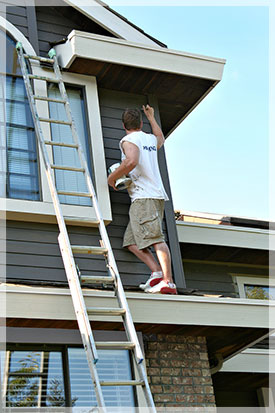Why It’s Not a Good Idea to Paint in the Sun
 Spring and summer are the ideal seasons for an exterior paint job. Fall can also offer optimal weather conditions for painting, but certain days are better than others. Professional painters know to avoid rain, but completing a project in direct sunlight can be equally ineffective.
Spring and summer are the ideal seasons for an exterior paint job. Fall can also offer optimal weather conditions for painting, but certain days are better than others. Professional painters know to avoid rain, but completing a project in direct sunlight can be equally ineffective.
While rain prevents paint from drying, sun has the opposite effect – it dries too quickly. In either case, poor adhesion results.
Consider these reasons:
- When temperatures are too high, paint dries too soon. In the process, it doesn’t fully bond to the material, which prevents it from forming a protective film.
- Poor adhesion doesn’t emerge right away. Instead, you’ll begin to notice it a few years down the line when the paint starts to prematurely flake and peel. Sunlight prevents the paint from drying smoothly.
- Certain types of paints dry quicker than others, especially latex.
- When you’re painting in hot, sunny weather, more time is needed between coats. When a second coat is added too soon, the paint may peel off from the moisture collecting underneath.
- Even if the air temperature is ideal, direct sunlight makes exterior surfaces 10 to 20 degrees hotter.
What Can a Professional Do?
While it’s best to simply not paint on a rainy day, professionals can work around the sun in many cases:
- The right temperatures for house painting are from 60° to 85°F, with low to moderate humidity around 50 percent and minimal wind.
- Scheduling a job in the early morning or evenings helps to avoid the sun and heat.
- If the sun does come out, professionals can work around the house, so they’re always in the shade.
- If direct sunlight can’t be avoided, a covering can be used over the area to create the shade needed.
With summer on its way, have you considered an exterior paint job for your home? Start by scheduling an appointment with M. Brett. To learn more, give us a call today.
